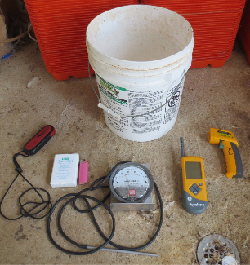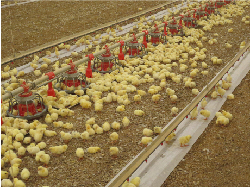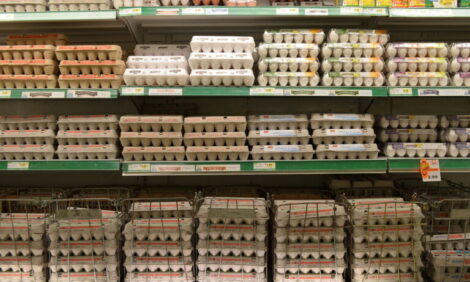



The Seven Basics of Better Brooding
There is no single key to successful brooding, according to Jess Campbell, Dennis Brothers, James Donald and Gene Simpson of the National Poultry Technology Center at Auburn University College of Agriculture. All it takes is paying proper attention to the seven brooding basics, they say.The authors report that they get a lot of questions, and one question always stands out during the winter months: “What is the silver bullet for growing chickens?” The answer is and will always be, “There is no silver bullet.” There are, however, certain basics of poultry husbandry, and the growers and companies that seem to always have the advantage are typically the ones who do the best job of managing those basics during brooding.
Brooding is the “lift-off” phase of chicken development, with the highest percentage of feed going to growth and so producing the most rapid growth rate, giving chicks a good start in life. That good start is extremely important.
No failure to achieve optimum growth during brooding can ever be made up later in the grow-out. Both research and on-farm experience show that even a few hours of poor conditions during brooding can do significant harm to overall flock performance.
Modern poultry houses and management systems give us the ability to control conditions in the house and give chicks the good start they need. All it takes is paying proper attention to the seven brooding basics.
 |
Paying proper attention to the Seven Brooding Basics requires making proper use of just six basic tools. Five of these, shown below the bucket, left to right, are relatively low-cost instruments that every grower should be familiar with: wind meters, smoke emitters, pressure gauges, air temperature and humidity meters, and infrared temperature guns. The bucket represents the sixth and most important tool: you yourself, live and in person, taking the time to sit on a bucket inside each house observing chick behaviour and equipment operation. The gadgets are essential for getting accurate readings of particular in-house conditions but they do not tell the whole story. It’s up to you to assess the situation and make the right management decisions to give your chicks the best start possible. |
Brooding Basic 1: Litter Management
Litter conditions set the tone for the flock long before the chicks arrive on the farm. For best performance, chicks must be placed on a consistent minimum of four inches of dry bedding at or around 88-92°F. Anything less will cause losses in performance proportional to the degree of insufficiency. If chicks are not started on fresh litter, steps must be taken to reduce litter moisture and properly condition the litter to release as much ammonia as possible before flock placement. Allowing the litter to set in a house cold and wet between flocks is a recipe for disaster.
What to do: Remove caked litter as soon as possible after the birds leave. After this, windrowing, using litter conditioning equipment, heating the litter with attic inlets and ventilating between flocks can all help achieve the goal of dry litter with reduced ammonia at day one. Top-dressing the brooding chamber and applying a company approved, ammonia-controlling litter amendment at the manufacturer's suggested rate and method is also highly recommended.
The goals of litter management are first of all to provide comfortable bedding conditions for the chicks but also to reduce the effect that litter moisture and ammonia have on the environmental control systems. If we have to manage heating and ventilation to compensate for poor litter conditions, it will be much more difficult – and costly – to provide the optimum growing environment chicks need.
Think about it: litter condition sets the tone for air quality, heating and ventilation through the life of the flock. Good litter sets the stage for success.
Brooding Basic 2: Temperature
Temperature differences as small as 0.5-1.0°F can impact overall chick health, behaviour and growth.
Electronic controller technology has given us the ability to monitor and manage temperature that precisely, and do this automatically on a real-time, 24-hour basis. This gives growers a huge management advantage over traditional manual thermostat control. Even so, the old computer adage 'garbage in = garbage out' applies to controllers also. A controller’s management capabilities are only as good as the information from the sensors it uses. Therefore we must pay close attention to sensor placement! If the ideal starting temperature is 90°F, this means 90°F at the feed and water lines, as consistent as possible.
Proper placement depends on the type of heating system and spacing of inlet vents in the house. Proper 'ideal' temperatures can also vary according to individual flock requirements. A good manager always monitors his chicks and makes appropriate adjustments.
However, do not expect temperature adjustments to fix every problem every time. Temperature is the most commonly monitored and controlled condition in poultry houses but the other brooding basics can be just as important to flock performance.
Brooding Basic 3: Air Quality
Excess ammonia or carbon dioxide, along with too high or too low relative humidity, can become serious problems, especially during winter flocks. The only way to solve or reduce air quality problems once they have occurred is to increase the ventilation rate. But ventilation decisions should be based on accurate assessment of conditions, and neither controller systems nor growers are equipped to monitor air quality factors accurately.
For relative humidity monitoring, inexpensive sensors can be purchased from local hardware stores and placed near mid-house away from heaters and air inlets. Often controllers can be fit with humidity sensors as well. Either way, the goal is to maintain in-house relative humidity at 50 to 65 per cent during brooding as long as possible. If relative humidity is below 50 per cent, deduct 15 seconds from minimum ventilation run-time. If it is above 65 per cent, add 15 seconds of run-time.
Early morning is an excellent time to judge air quality conditions and make ventilation adjustments, if needed. If unsure, adjust one house and compare the next day.
Too-high ammonia (NH3) or carbon dioxide (CO2) levels can impact bird health and growth and can be challenging to control in winter but are more difficult for a grower to measure accurately. Because growers become accustomed to smelling ammonia, the 'nose test' cannot be relied on. Birds can suffer and even be blinded before the grower becomes aware of a serious problem.
Carbon dioxide is odourless, and it takes a while for humans to experience symptoms – headaches, nausea and sleepiness – of excess carbon dioxide levels. Therefore, growers typically must make judgments about these factors based on observation of birds and bird behaviour.
If accurate monitoring equipment is available, ammonia levels should be kept below 25ppm. A minimum of 15 seconds of additional minimum ventilation run-time should be added to houses testing above 25ppm and an additional 30 seconds for over 100ppm.
Carbon dioxide levels should be kept below 3,000ppm. Too-high carbon dioxide levels are usually highest when pre-heating and brooding chicks in tight houses during cold weather when heating systems are running constantly and ventilation run time is lowest.
Fortunately, most ammonia and carbon dioxide problems can be minimised by proper litter management (including use of ammonia-suppressing amendments) and adequate minimum ventilation (including control of relative humidity).
Brooding Basic 4: Ventilation
Good environmental control during brooding requires properly executing the minimum ventilation basics:
1. Pressure. A good rule of thumb for pressure is for every 0.01 inches of static pressure measured in water column, air travels about two feet. To get the air to the middle of the house near the ceiling requires about 0.10 inches of pressure in a 40-foot wide house. This means we have to have a house that can pull 0.15 inches or more during a house tightness test with fan power of 1cfm per square foot of floor space.
2. Inlet Door Opening. The required air pressure capability must be combined with the proper perimeter inlet door opening to throw the air to the centre of the house. Too little or too wide of an opening will result in outside air blowing directly onto the feed and water lines and, more importantly, onto the chicks.
Step one of vent management should be to latch-close manually all or most of the vents not located in the brood area of the house, after which additional vents inside the brood area may need to be latched closed to achieve the proper air flow with the desired fan power (typically 1.0 to 1.5cfm per square foot).
Bottom line is you have to get the correct inlet door opening and static pressure to achieve the desired air throw and mixing. Latching doors or opening doors can be used as a method of fine tuning your perimeter inlet set up.
A smoke emitter of some type will show exactly where the air is going. Do whatever it takes to get the air to the peak of the ceiling to promote good mixing.
The importance of adjusting vent door openings properly to achieve good moisture removal cannot be over-emphasised.
3. Fan Run Time. Finally, it is essential to calculate the correct amount of minimum ventilation fan run time.
The authors offer a handy electronic calculator on the poultryhouse.com web site that anyone can use (no computer training required). You only have to know the basic numbers for your house fan capacity and the number of chicks you are brooding, along with the per-chick run-time you want (and there are even suggestions for deciding what that number should be). Click the Minimum Ventilation Run-Time Calculator link at the top of the homepage. There is a separate link to a calculator designed for smart phones.
 |
Offering chicks easy and early access to quality feed and water cannot be over-emphasised. Feeder lines and drinkers must be maintained and kept working properly. Also realise that if chicks have to make a decision between comfort and feed and water, they will often chose comfort. That means it is essential to make sure conditions at chick level around feeders and drinkers are good: no cold spots or draughts, no wet litter etc. |
Brooding Basic 5: Water Quality and Availability
Having high-quality water freely available can make a huge difference in getting chicks off to a good start. One of the first things a grower should do in case of inconsistent performance is to have a water sample analysis conducted. Contact your company or local County Extension Office for help with water sampling and analysis. If substantial water quality problems are found, a consultation with a respected water quality expert is in order.
Water quantity problems can be difficult to diagnose but a common-sense approach to making sure chicks have plenty of water available is to do a good job of routine drinker system maintenance. The importance of getting water into the chick as soon as possible cannot be over-stated. This means that cleaning water systems and activating nipple drinkers before every flock arrives is extremely important.
Also pay close attention to initial drinker height and make adjustments that reflect bird growth on a routine basis. Chicks will consume a lot less water than older birds so flushing drinker lines often in the beginning will keep the water fresh and promote greater consumption. Water filters, regulators and any possible water restriction points must be monitored before and during each flock.
Do not assume water quality and availability are adequate, verify them.
Brooding Basic 6: Feed Availability
Feed availability runs hand in hand with water availability and is of equal importance.
The quicker chicks have access to and consume quality feed, the better start they will have. The actual amount an individual chick consumes in the first seven days is very small, so the tonnage of feed in the house on day one is not nearly as important as providing access for every chick to easily get to feed.
Another way to say this is that feeding space/opportunity is most important. Chicks having sufficient access to feed is more than just feeder pan, chick tray and supplemental feed lid management.
Environmental factors also play a huge role in feed availability because if a chick is uncomfortable (too hot, cold or in a draught) near the feed trays or lines, it will not eat or drink sufficiently. This can be a severe problem that must be corrected.
Many companies look for about 95 per cent of the chicks with feed and water in their crops after 24 hours. Remember, if a chick is given the choice between comfort and feed or water, it will choose comfort. Make sure every chick gets feed and water quickly and easily.
Brooding Basic 7: Lighting
Chicks grow, gain and perform better the quicker they gain access to feed and water, and light stimulation further encourages feed and water consumption.
Specific lighting programmes are under constant revision and vary from one integrator to another. However, the most common recommendation for light intensity when lighting is on calls for a minimum average light intensity of three or more foot-candles for the first seven to 10 days, measured along the feed lines between grow lights.
Large shadows, blown bulbs and insufficient lighting intensity and uniformity are problems that can be identified and corrected with the use of a simple $150-200 digital light meter.
Don’t assume your light intensity is adequate, verify it. Buy a meter and calibrate the dimmer in each house. Many growers are surprised at how far off their settings are after they measure them with a meter.
The Bottom Line
Each of these brooding basics has evolved and improved into what the industry considers standard procedures for brooding chicks today.
Using the tools and equipment available to follow these basic procedures is not just the best but the only way to give your chicks the 'lift-off' they need to become a top-performing flock.
Growing chickens today is not a matter of managing by the day but by the hour.
Mistakes made in the first 72 hours cannot be made up later in the flock. Taking the time to do brooding right pays off at catch-time.
April 2014








